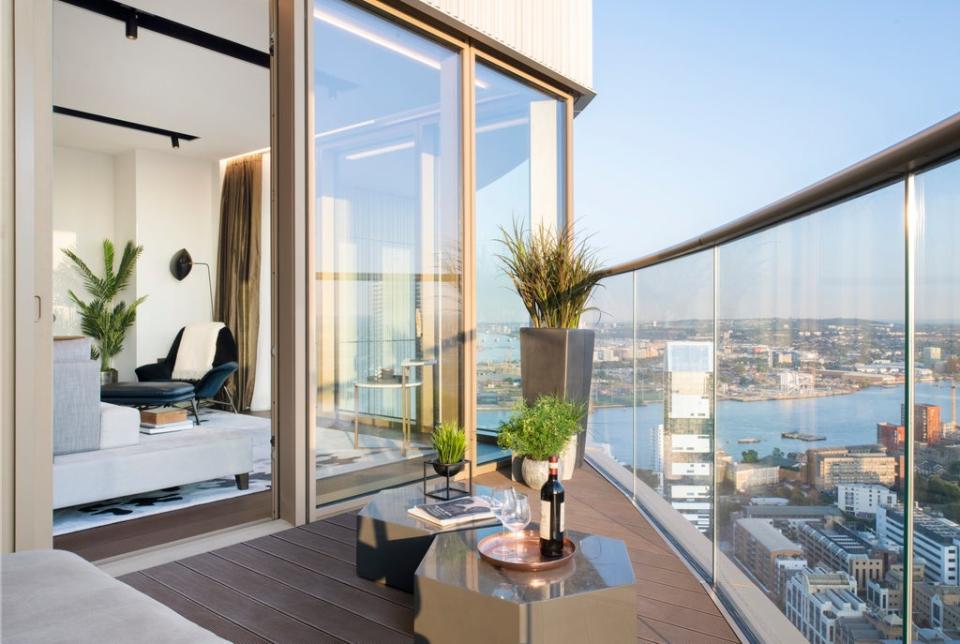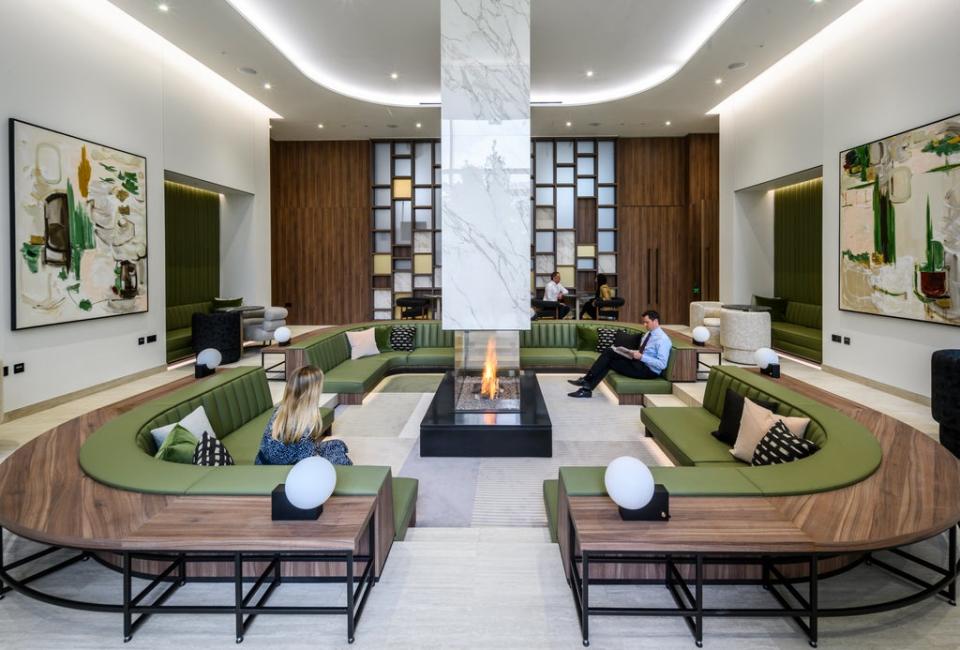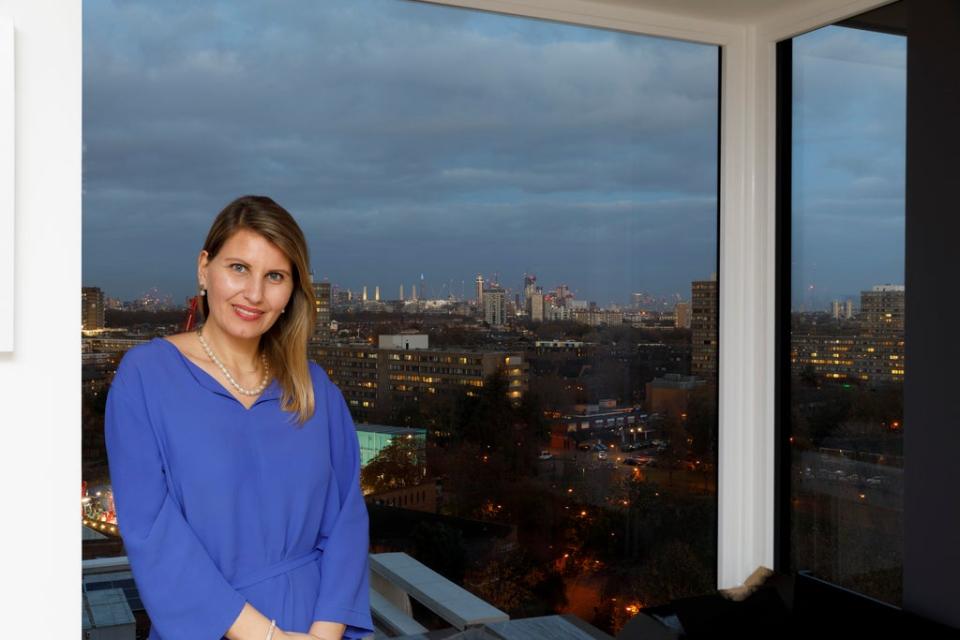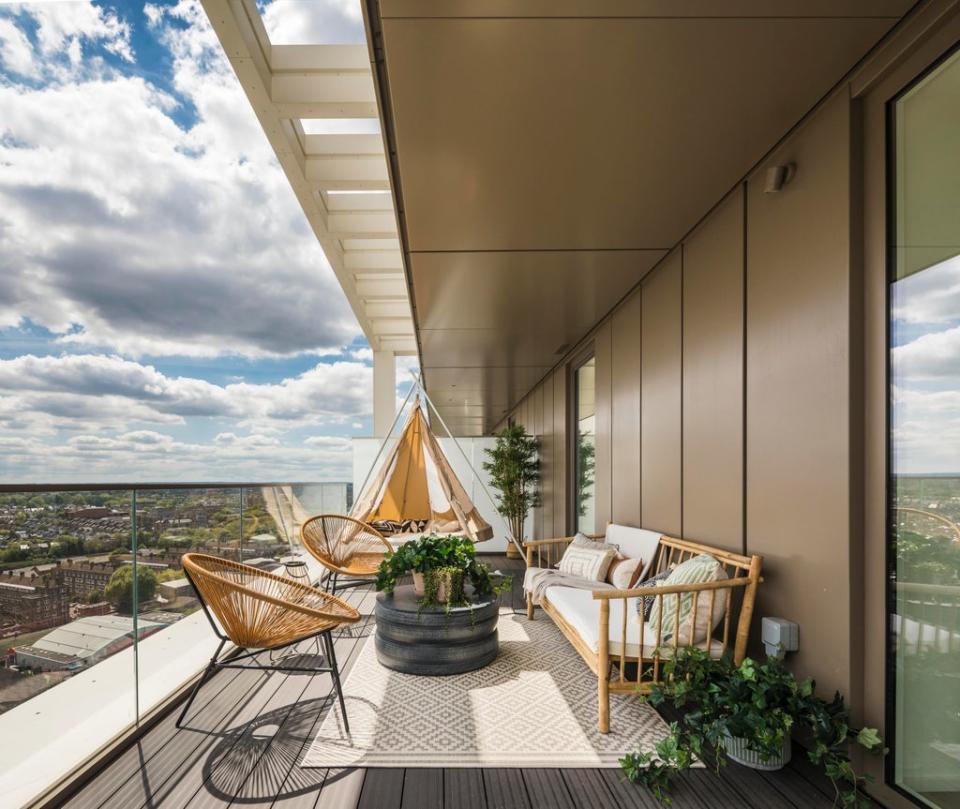New Homes Awards: east London’s architectural tour de force in fresh wave of glamorous homes for prime postcodes

Traditionally, Londoners have looked west for fun and fashion, and it has taken a generation to banish the thought that Docklands is the back of beyond. The former eastern frontierland now rivals “central” London in many ways, attracting not just shoppers and pleasure seekers but movers and shakers from other parts of the capital.
One sign of the area’s cachet is a fresh wave of glamorous housing. Unlike Isle of Dogs’ initial splurge of gated apartment blocks providing crashpads for bankers and corporate lawyers and boxy flats for the army of clerical and computer workers, the new projects are more family-friendly and bring a sense of neighbourhood and community through thoughtful architecture, parks and public spaces, amenities and even schools.
This includes skyscrapers for living in rather than working in. And none is better than One Park Drive, a cylindrical high-rise designed by celebrated architects Herzog & de Meuron, of Tate Modern fame.
Standing in stark contrast to the oblong office blocks that surround it, the 483-apartment tower is an architectural tour de force. Part of a new mini district on the Canary Wharf estate, the building was designed from the inside out.
Clad in rippling, ivory-coloured, terracotta panels, the 58-storey dockside tower has a series of interlocking bays.
Rather than boxy flats stacked on top of each other, the tower’s façade comprises three distinct design elements, or residential zones. And while the exterior is rounded, interiors mostly have regular straight lines. “Circular buildings are challenging when it comes to floorplans as you need specific furniture or end up with lots of dead space,” says Brian De’ath of developer Canary Wharf Group. “This building was designed from the inside out. It has superb external impact but works well internally and is beautiful, too.”
On the lower level are free-flowing “loft” apartments with sliding walls and pivot screens, high ceilings and seamless resin floors. Deep, wraparound terraces are set back, sheltered from the wind yet have a close relationship with the water and green space.
Above these homes are 22 floors of smaller flats, while the top 25 storeys have larger apartments with exposed concrete walls, bespoke timber panelling, pivot doors, natural stone finishes and double-height terraces.

Across the ground, first and second floors is an impressive entrance foyer, plus a glass-walled health club with gym and swimming pool, as well as a library and residents cinema. Prices start at £840,000 for a two-bedroom loft apartment. Call 020 7418 2000.
One Park Drive is part of the new Wood Wharf neighbourhood, that will eventually bring more than 2,000 new homes to what was previously an exclusively commercial zone.
Though synonymous with Docklands, Canary Wharf is a 128-acre private estate — an island within an island that is the Isle of Dogs — with its own “ring of steel” security cordon.
For many people, it remains an alternative London, one that has more in common with downtown Chicago or Singapore than with Kensington or St John’s Wood.
With an expanding workforce, it has matured into a lively district. More than 800,000 people a week are attracted to its five retail malls, 300 shops, bars and eateries, gyms and concert venues.
Transport connectivity used to be a weak point, but Crossrail trains, taking 13 minutes to Bond Street, will make Canary Wharf feel less detached from central London.
Developers are trumpeting this improved connectivity, claiming that property values will eventually reach parity with the City and riverside districts such as Bankside and Battersea, typically about 30 per cent more expensive. If you like big skies, vast expanses of water and dramatic modern architecture, that price difference makes Canary Wharf doubly attractive.
WHITE CITY LIVING, W12
Inspired architecture shines at prime new Zone 2 address opposite BBC Television Centre

Born-again White City is the location for another ongoing project, with £8 billion of investment bringing up to 6,000 new homes. Also in the mix are an Imperial College campus of academic excellence to rival Harvard, a media village for creative businesses, an expanded Westfield shopping precinct and a John Lewis department store, along with green public space and upgraded transport links.
White City Living, across from redeveloped BBC Television Centre, is arguably the most ambitious project, a complicated engineering challenge that has created a desirable new address in the middle of a landlocked zone corralled by train tracks, the roaring A40 and West Cross Route.
A key feature is a five-acre, L-shaped park plus new bridges and walkways above and through a railway viaduct. A line of 28 derelict arches will become glass-fronted boutiques, bars and eateries. More than 350 trees have been planted. Architects Patel Taylor came up with a “Living in the Park” concept, designing the landscaping first and then the buildings. A public central green runs through the scheme, while there are also private oriental water gardens, sanctuary spaces and sculptural fountains inspired by Counter’s Creek, a “lost” river that used to run through the area.
A massive underground car park frees up space for the landscaped areas. A priority voiced by locals was for better connections to Westfield and the train station, so a “green” pedestrian deck has been built above the open-air tracks of the Central line.
Tower blocks rise to 32 storeys. Prices start from £845,000 and there is a Home Club with spa, gym and business lounge plus a “multi-use entertainment suite” for cinema screenings, virtual golf and the like. Call 020 3504 5813.
Though a lot of homes have been packed on to the plot, the architectural quality shines through. Grid-shaped apartment blocks overlooking central gardens have crisp, white concrete façades, a reference to the marble-clad pavilions of the 1908 Franco-British Exhibition that gave the area its name.
A stadium built for the 1908 Olympics continued as an athletics venue for long after, and in the late Thirties, London County Council built a huge council estate on part of the exhibition grounds, while the BBC’s purpose-built Television Centre opened in 1960. The rest of the land was gobbled up by warehouses and distribution depots.
Westfield London, which opened in 2008, has proved a game changer. With the glitzy shopping mall came a new Zone 2 Tube station at Wood Lane plus a new Overground station, sparking more regeneration. The wider mayoral strategy is for White City to connect with other west London Opportunity Areas such as Kensal Canalside and a 2,350-acre site at Old Oak Common, where 24,000 homes and a transport superhub are planned.
‘I got a 10% discount as an NHS key worker’

As architectural transformations go, the change at Nine Elms in south-west London is remarkable. Yet there are worthier examples of outstanding architecture in the grittier and cheaper Battersea hinterland.
Coda, in York Way, will strike a chord if you agree with renowned German writer Goethe that architecture is frozen music.
The 24-storey tower certainly hits the high notes, with 130 homes above a brand-new headquarters for the Royal Academy of Dance (RAD).
The building’s bold, fluid form is said to be inspired by the dynamism of dancers’ movements, with a façade of projecting bays stepping back towards the top giving a sense of rhythm. Certainly the project raises the bar for this pocket of Battersea, characterised by a mix of public and private housing.

Flanking Coda are two smaller housing association blocks, all sitting on a single-storey landscaped podium that flows into a new public promenade.
Coda’s façade is clad in glass and textured aluminium that looks like stone, while apartments have full-height glazing and many have dual-aspect balconies. A statement entrance lobby has a 24-hour concierge, plus there is a gym, residents lounge, underground parking and cycle storage, while the podium garden has areas demarcated for relaxation and yoga and Pilates sessions.
The new RAD complex below has seven dance studios, two cafés and a specialist archive library.
NHS doctor Gergana Peeva, 39, was an early bird buyer at Coda, being “smitten by the architecture and the fabulous views”.
She had been renting in Chelsea and expected to stay living north of the river, but spotted Coda on a chance visit to Battersea and snapped up a home off-plan.
“I chose a one-bedroom corner apartment with a vista taking in Canary Wharf and the Shard,” she says. “It has a perfect balance of outside and inside space. The bonus was that I got a 10 per cent discount as an NHS key worker.” Two-bedroom apartments start at £770,000 and come with Poggenpohl kitchens, Corian worktops and Poliform wardrobes. Call 020 7924 6077.
Coda is the creation of architectural practice Patel Taylor, which has also made a mark with London Dock, a stylish redevelopment of the former News International headquarters in Wapping, E1.
Read More

 Yahoo Finance
Yahoo Finance 